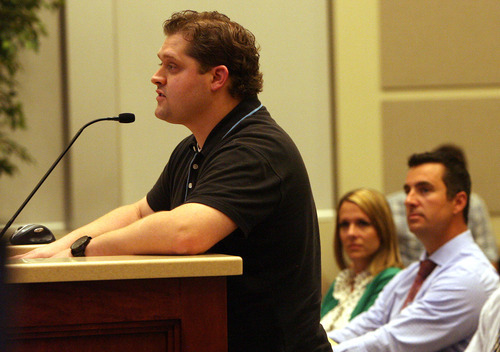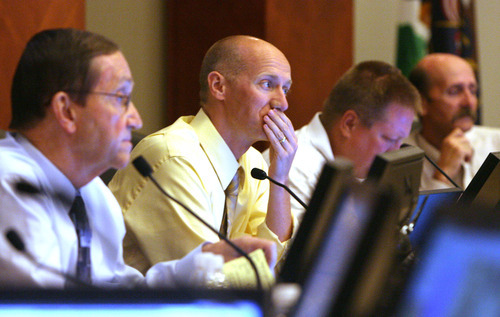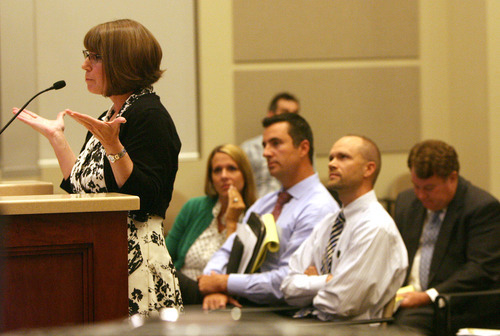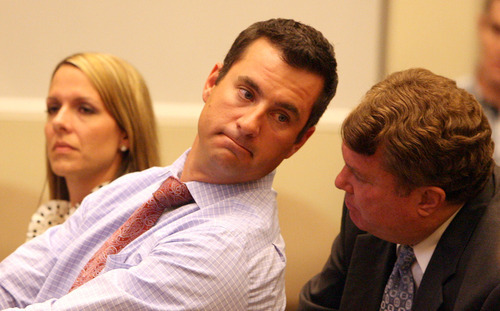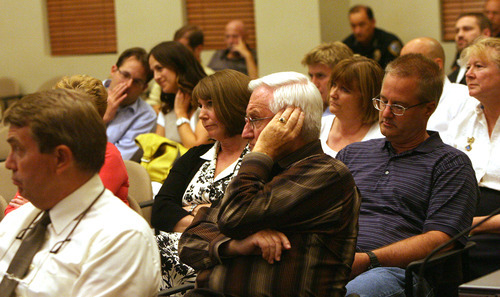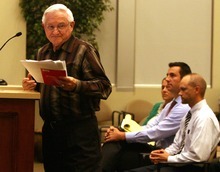This is an archived article that was published on sltrib.com in 2012, and information in the article may be outdated. It is provided only for personal research purposes and may not be reprinted.
Draper • City councils sometimes mess up.
That was the message this week from Draper council members, conceding the city had no business approving a 2002 ban on backyard development on lots abutting scenic Corner Canyon.
With the admission, the council voted 4-1 to grant a property owner's request to remove the so-called "Limit of Disturbance" on his lot so he could move forward with his house and backyard plans.
Andrew Kelley's petition, which received a negative recommendation from the Planning Commission earlier this month, had upset some neighbors hoping to protect the natural landscape.
"We really don't have any business on this particular area with this Limit of Disturbance," said Councilman Troy Walker, adding that the city instead should have put a binding conservation easement in place a decade ago. "Legally, the city doesn't have the ability to regulate the use of this property the way that those in opposition think we do."
Councilman Alan Summerhays agreed. "We did something that we shouldn't have, and it came back to bite us."
That first nick came in 2010, when John and Angela Dayton took Draper to court after the council unanimously rejected their request to lift the restriction on their property. The 3rd District Court ordered a rehearing and, two years later, on Feb. 21, the council did an about-face, approving the request in a 4-1 vote.
The legal challenge changed everything, Councilman Jeff Stenquist said. After the city did its legal research, he said, it felt it hadn't used the "right mechanism" to restrict development.
"In hindsight," Stenquist said, "a conservation easement is what we should have done."
Councilman Bill Colbert, the lone dissenter in both votes, opposed the Kelley and Dayton requests, arguing they violate the neighbors' property rights.
He noted the Daytons have since installed a bright red and blue basketball court, which neighbors have called an eyesore. He encouraged those neighbors to contact Utah's property-rights ombudsman.
"The Dayton case was an egregious taking of rights," he said.
Dale Jensen said the basketball court has dinged his property's value.
Fed up with the years-long controversy, he urged the council to "remove the [Limit of Disturbance rule] if you're not going to be concerned."
State Rep. LaVar Christensen, R-Draper, an attorney, represented the Daytons and the Kelleys in their disputes. In this week's meeting, he argued the Limit of Disturbance was a mistake and that it should remain "only if it served a legitimate public interest," not just the interest of two or three neighbors.
Residents Allison Strong and Barbara Watkins, who opposed the Kelleys' request, defended the rule as a way to protect the natural scenery for everyone.
"The Limit of Disturbance was ratified by this council," Watkins said. "I don't think that was some harebrained idea."
City Attorney Doug Ahlstrom emphasized Wednesday that the rule was created by the developer, not the city, but noted that the council did approve it.


